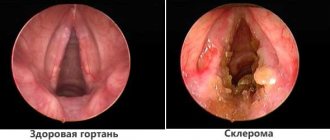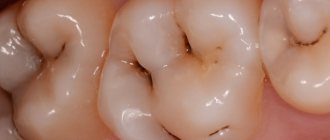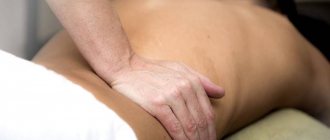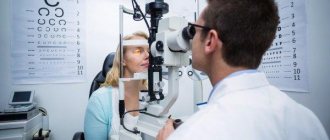General information
There are many, many reasons why a headache can occur. This symptom can manifest itself both as a result of ordinary fatigue, and due to a number of diseases. Some of them can be very serious. After all, severe headaches also occur with the development of tumors in the brain and with other serious illnesses. One of the options for localizing pain is pain in the forehead. Common causes of such pain can be divided into five types:
- poisoning by toxic elements in everyday life;
- head injuries;
- infectious diseases;
- disorders associated with the functions of the nervous system;
- diseases of the cardiovascular system.
These reasons will be discussed in more detail in the article below.
Diagnostics
Only a specialist can tell you exactly why your head hurts in the forehead area. Determining the cause is associated with an analysis of the nature of the pain and accompanying symptoms. Signs of a cold will be detected by a therapist or pediatrician by conducting a general examination and obtaining a blood test. This doctor will also suspect inflammation of various forms of sinusitis. However, only an otolaryngologist can make an accurate diagnosis based on an x-ray and blood test.
Most diseases that lead to pain in the head are diagnosed by a neurologist. To clarify the diagnosis, he prescribes the following studies:
- MRI. The resulting images make it possible to evaluate the structure of the brain, tissue density, the presence of tumors, necrosis, hematomas, the amount of cerebrospinal fluid, and the condition of blood vessels. Can be performed on young children and pregnant women. Children are performed under anesthesia.
- CT scan. As a result of the examination, a detailed picture is obtained that characterizes the presence of inflammation, tumors, and hemorrhages. Helps to see lesions of the sinuses, skull bones, and membranes of the brain.
- Angiography. It is a type of radiography with the introduction of a contrast agent.
- Ultrasound and Dopplerography of the brain and neck. Allows you to see organic lesions, identify disturbances in the shape, size of blood vessels, individual areas of the brain, and determine the speed of blood flow.
To confirm intracranial hypertension, consultation with an ophthalmologist is necessary. Also, in order to determine this diagnosis, a puncture of the cerebrospinal fluid is performed.
Why does my head hurt in the forehead area?
Unfortunately, it is impossible to answer this question unambiguously, because there are quite a few reasons and they are very diverse. First, let's list the main diseases that cause headaches in the forehead:
- Sinusitis - inflammation of the mucous membrane of the maxillary sinus - can cause pain in the forehead. Sinusitis occurs as a consequence of complications of other infectious diseases and problems with the roots of the upper back teeth. If you have a persistent runny nose and a frequent headache, try bending over and tilting your head down. If there is heaviness and pressing pain in the nasal sinuses, there is a suspicion of sinusitis. This disease must be treated under the supervision of a doctor.
- Frontitis - a form of sinusitis - is an inflammation of the frontal sinus. This disease often manifests itself in the form of a headache in the morning. After the sinuses are emptied, the pain subsides slightly, but it returns over time. When treating frontal sinusitis, vasoconstrictors are used for instillation into the nose and lubricating the mucous membrane of the middle nasal passage, as well as analgin, aspirin, heating with a blue light lamp, inhalation, and in severe cases, intramuscular antibiotics. In case of chronic frontal sinusitis, surgical intervention can be provided.
- Increased intracranial pressure. This type of headache occurs in people predisposed to low or high blood pressure. When intracranial pressure increases, a headache occurs in the forehead, temples, back of the head, or may even cover the entire head. In this case, a change in blood pressure can cause a headache, and it can change for various reasons: stress, overexertion, fatigue, climate change or weather change.
- Infectious diseases accompanied by elevated body temperature can provoke headaches, localized in most cases in the forehead. In addition to colds, sore throat and pneumonia, the following diseases are often accompanied by headaches: Flu - causes headaches in the forehead, temples and manifests itself along with chills, weakness and muscle pain. With the flu, it becomes painful to look at the light and move your eyes;
- Malaria and typhus are accompanied by a sharp headache;
- Dengue fever: pain in the head, joints and muscles;
- Acute meningitis: headache and nausea, vomiting.
In addition to the listed diseases, headaches in the forehead can appear due to fatigue or excessive physical or mental stress. As a rule, such pain appears in the neck area and moves through the back of the head to the forehead and brow ridges. Such pain is accompanied by nausea and loss of coordination.
We recommend
- Nitrates. People who care about their health have long been aware of the dangers of nitrates, which are now very common. Nitrates are found in large quantities in meat products that have undergone various types of processing.
- Histamine is a substance found in large quantities in alcoholic drinks such as red wine or beer. In small doses, histamine helps strengthen the human body’s immune system, and in large doses it can contribute to the development of migraines.
- Monosodium glutamate is a very common food additive and is found in large quantities in raw seafood. Therefore, you should not be surprised by a headache after a hearty lunch at a Chinese restaurant.
- Tyramine can also cause headaches. Found in nuts, chocolate and some types of cheese.
- Caffeine - in small quantities, stimulates the brain, and if consumed in excess, can cause pain in the head. Therefore, try to limit yourself in the amount of coffee, tea, energy drinks and cola you drink per day.
- The fruits of citrus trees contain a large amount of acids, which can cause headaches in allergy sufferers.
If a person often asks himself the question of why his head hurts in the forehead, or a similar symptom is observed in a child, he should not delay contacting a doctor and a full examination. What to do and what kind of research is needed if the headache is severe and constant, the doctor will tell you after listening to all the complaints. Listed below are the factors that can cause pain in the frontal part of the head and temples.
Diseases of ENT organs
Pain in the forehead and temples, as well as in the eyes, often manifests itself with sinusitis, frontal sinusitis, ethmoiditis, etc. If an adult or child has a headache in the frontal part and at the same time there is an increased temperature, a stuffy nose and discharge appear, most likely it is about such diseases. Therefore, in this case, you need to consult an otolaryngologist.
- A characteristic headache occurs when inflammation is noted in the maxillary and frontal sinuses. With frontal sinusitis, the forehead hurts very badly; most often, pain above the bridge of the nose develops in the morning. Throughout the day, the discomfort may subside a little. Headaches in the forehead and eyes can vary in intensity and range from mild to almost unbearable. This is due to the outflow and filling of the sinuses with pus.
- Frequent manifestations of sinusitis also worsen the quality of life for many people. If the causes of pain are associated with sinusitis, then a severe headache in the forehead is accompanied by signs of general intoxication. Headache with sinusitis spreads to the cheekbone from the lower edge of the eye. It gets worse as you bend down. Often with sinusitis, the temperature rises and purulent discharge comes out of the nose. Sometimes there is pain in the head when bending down. However, in the case of chronic sinusitis, the patient may only be bothered by headaches, a slight runny nose, and a slightly elevated temperature. Therefore, it is best to contact a specialist who can determine the cause of the problem.
- With ethmoiditis, the ethmoid sinus, which is located behind the nose in the depths of the skull, becomes inflamed. Very often, this disease develops in adults and preschool children with weakened immune systems, which may be associated with chronic diseases. Sometimes ethmoiditis is a consequence of viral diseases of the nasopharynx. With this disease, the head hurts at certain times of the day, and from time to time symptoms of intoxication of the body are bothersome - weakness, runny nose, fever, etc.
Many people do not even realize that the most common household items that are used almost every day can contain toxic substances. They are the ones who can provoke such a symptom. Very often, sellers of industrial goods, warehouse workers and some enterprises where such things are produced complain about headaches in the forehead and temples.
The thing is that there are a lot of low-quality products on the modern market, the production process of which uses very harmful toxic substances. Toxins are often present in a variety of dyes, plastics, household appliances, carpets, etc. It often happens that headaches begin to bother a person after purchasing something - for example, furniture or carpeting.
Therefore, if you have a headache for a week, it is worth analyzing your latest purchases. To avoid such problems, you should buy only high-quality items from trusted manufacturers. First of all, this applies to building materials, furniture, and various household appliances. You also need to be very careful when choosing fabrics and toys for children. Experts advise that when choosing any product, you should sniff it, because low-quality items, as a rule, have a very pungent odor.
Chronic poisoning negatively affects health, in particular the function of the immune system. Unpleasant sensations can also be caused by food products. After all, many of them contain a wide variety of additives that can negatively affect the body.
The following additives have the strongest negative impact on health, provided that a person consumes them very often and in large quantities:
- nitrites, nitrates contained in meat and plant products;
- any flavor enhancers, monosodium glutamate;
- products that cause allergies if they are consumed by those who are prone to allergic reactions;
- nuts, chocolate, cheese due to their tyramine content;
- alcoholic drinks, especially wine, beer;
- caffeine-containing drinks if a person abuses them.
With such diseases, intoxication of the body always occurs, expressed by fever, weakness, pain in the joints and muscles. The following causes of headaches in the frontal part associated with infections and viruses are identified:
- Headache in the forehead and temples during colds, flu, ARVI - in the first days of these diseases there is pain in the forehead, temples, above the eyebrow. A little later, other symptoms appear - fever, runny nose, cough, etc.
- If the frontal part of the head hurts, the causes may be related to meningitis or encephalitis. However, with these diseases, pain can also be localized in the temples, back of the head and other areas of the head. With these diseases, a person may lose consciousness and develop neurological symptoms. Both meningitis and encephalitis are very serious diseases, so constant headaches in both adults and children 8 years old, 10 years old, younger or older should be a reason to consult a doctor.
- This symptom also manifests itself in less common diseases - Rift, Germiston, Dengue, Ithaca, Kathu, Maritubai, etc. fevers. These are viral diseases that can be contracted due to mosquito bites in southern countries. Most often, these ailments are diagnosed in travel lovers. An infected person shows signs of severe intoxication, which causes severe pain in the forehead area.
Types of headaches
When you have a headache, pressure on your forehead and heaviness in your eyes, it is important to determine the nature of the ailment. This helps to establish the correct diagnosis.
Pulsating
Throbbing pain is characteristic of excessive stretching of hypotonic vessels. This often occurs with vegetative-vascular dystonia, migraine, and hypertensive encephalopathy. The provocateur of pulsations is alcohol, the appearance of adrenaline and histamine in the body.
This type of pain is typical for colds, as they increase blood pressure. It can be compared to a knocking in the temples, when a clear pulsation is felt.
Acute
The acute nature of the pain syndrome is present in infectious diseases, for example, frontal sinusitis, sinusitis, which are characterized by inflammation of the mucous tissues of the frontal sinuses.
Intolerable, excruciating pain over the left or right eye often occurs during a severe migraine attack accompanied by an aura. Associated with visual impairment, heightened perception of external factors, numbness of the arms and legs up to loss of motor activity, nausea and vomiting, and weakness.
Stabbing
Stitching pain occurs with optic neuralgia. Piercing, stabbing sensations in the evening or morning are typical as a reaction to fluctuations in air temperature.
Pressing
A pressing headache occurs when you exert too much tension. There is a feeling as if something is pressing on the frontal part. It is compared to a helmet pulled over the head, pressing on the temporal, occipital, and frontal areas.
The pressure starts from the neck, extends to the back of the head, temples, forehead, eyes, crown, crown, covers one or both sides, dizziness when bending over. The attack is monotonous, dragging. If there is pressure on the forehead when turning the head, this may be due to brain abscess and encephalitis.
Strong
Severe headaches are characterized by the inability to do anything during this period. Such attacks are typical for infectious and viral diseases, brain tumors, hematoma (collection of blood) or abscess (collection of pus).
Frequent pain
If the pain manifests itself in short but frequent attacks that occur in the morning or at night, this is typical for cluster or cluster pain. The malaise in this case is very strong, cutting, shooting, piercing, concentrated on the right or left.
Frequent headaches that occur in attacks are characteristic of migraine. An acute headache that occurs frequently requires a visit to a neurologist.
Constant
Constant headaches accompany a person at work and at home, preventing them from sleeping and living a full life.
When a headache persists and does not go away for a week or more, the condition is not relieved by analgesics - this is a sign of a serious pathology that requires detailed study.
Household poisoning
The market is flooded with goods that are made from second-class raw materials and with gross violations of technology.
Harmful substances evaporate over time, but short-term exposure will have time to hit the immune system.
Separately, the dangers of food products should be noted. In their production, manufacturers use a lot of additives and synthetic substances. All of them can cause headaches in the frontal part of the head.
Nutritional supplements that cause headaches in the forehead area constantly and almost every day:
- Monosodium glutamate. There is a lot of this additive in seafood that has not undergone heat treatment.
- Histamine. Small doses have a positive effect on the immune system. But if there is an excess of it, then there is a high probability of migraine attacks. To avoid acute and severe pain in the frontal region, you should limit your consumption of red wine and beer. Otherwise they may cause vomiting.
- Nitrates. These substances are very common. Meat products are oversaturated with them.
- Caffeine. Excessive intake of it into the body causes a condition when the anterior lobe of the skull begins to hurt. To avoid this, you should not overuse caffeinated drinks.
- Tyramine. Oddly enough, but the headache in the forehead area hurts and the pressure is unbearable, and from eating certain types of cheese, as well as chocolate.
- Citrus. These bright fruits contain acids, which cause a sharp painful reaction. It occurs especially often in people prone to allergies.
If symptoms of poisoning appear, drinking plenty of fluids will help remove toxins.
Other reasons
Frequent pressure surges, throbbing and severe headaches in the forehead can occur due to osteochondrosis. This disease is widespread today. Office work and a sedentary lifestyle can lead to its development.
In addition to osteochondrosis, pressing pain occurs due to:
- disturbances in blood flow to the brain;
- atherosclerosis;
- hypertension;
- neurovascular dystonia.
Brain hypoxia develops as a result of impaired blood flow to the brain tissue; the cause of this phenomenon is considered to be pathological narrowing of the vessels of the cervical spine. The cause may be atherosclerotic plaques or blood clots.
Hypertension of varying degrees can cause severe pain in the head in the forehead area. An unpleasant sensation occurs when the weather changes, during stress or nervous tension. Often, pain in the frontal part of the head, the causes of which are associated with changes in weather, occurs spontaneously. In this case, taking specific medications can help.
Atherosclerosis of cerebral vessels leads to disruption of blood flow to tissues. As a result, the brain does not receive enough oxygen and nutrients. In this case, you need to consult a doctor and undergo medication treatment. Without treatment, the patient's risk of stroke increases. Treatment is long-term and involves the use of various types of medications. In this case, headaches in the frontal part of the head disappear gradually after taking the necessary medications.
Narrowing of the vessels of the cervical spine leads to migraines and increased intracranial pressure. The person may experience a nosebleed or momentary loss of consciousness. A sign of such a pathology can be pain; it begins to pulsate in the temporal or frontal lobe of the head.
Attention! Sometimes it is difficult even for a doctor to understand why a headache in the forehead area occurs. In such a situation, the doctor may prescribe a number of diagnostic procedures or hold an urgent consultation.
Which doctor should I contact?
If a person is constantly bothered by such a symptom, the question of which doctor to contact for headaches is, of course, relevant to him. If you experience constant discomfort, you should contact a therapist, who will conduct a survey and examination and tell you which doctor to go to next. As a rule, consultation with an ophthalmologist or neurologist is required. Only headache problems are dealt with by a cephalologist.
If a child of 4 years old, younger or older has a headache, you should first consult a pediatrician. The problem can only be eliminated if the correct diagnosis has been established. This is what treatment depends on. Taking pain medication constantly is a poor strategy and can lead to other health problems to develop over time.
If the frontal part of the head hurts, and a number of other clinical symptoms are present, it is recommended to consult several specialists. First of all, you need to see a therapist. To obtain more accurate data about the patient’s condition, he can make an appointment with a neurologist, otolaryngologist, traumatologist, gastroenterologist, ophthalmologist and dentist.
In order to confirm the diagnosis, the doctor prescribes instrumental and laboratory diagnostic methods. If there is discomfort and pain in the forehead area, the following are most often used:
- General and biochemical blood tests;
- coagulogram, which makes it possible to assess the patient’s blood clotting parameters;
- lumbar puncture with bacterial culture of cerebrospinal fluid;
- angiography;
- encephalography using contrast agents;
- X-ray examination;
- electrocardiography;
- CT and MRI.
Diagnosis of ailments
When pain in the frontal part of the head causes discomfort, you should consult a doctor. It is better to visit several specialists at once to reliably determine the cause:
- therapist;
- traumatologist (if there was a recent head injury);
- neurologist;
- ophthalmologist;
- dentist;
- otolaryngologist (ENT).
Diagnostics involves a thorough examination, which includes the following procedures:
- magnetic resonance and computed tomography (MRI, CT);
- radiography;
- Dopplerography (examination of the cervical spine and blood vessels);
- electroencephalography;
- angiography;
- blood and urine tests;
- cerebrospinal fluid examination.
Diseases of the ENT organs
These pathologies are always accompanied by pain in the frontal region of the head. Most often, this condition appears during the progression of inflammatory processes.
- Sinusitis. Characterized by general intoxication, and not just headache.
- Frontit. The headache usually occurs in the morning and there are days when the intensity of the discomfort is significantly reduced. This is explained by the filling and release of pus from the sinuses. When you have a headache in the forehead area every day, this is a clear sign of this disease.
- Ethmoiditis. The painful syndrome always appears at a certain time and is accompanied by a runny nose and weakness.
Full treatment is necessary to relieve the inflammatory process.
Doctors' recommendations
To eliminate a problem such as frequent headaches, doctors recommend:
- Undergo an examination of the body to find out the reason that led to their occurrence.
- Contact a doctor who, based on the diagnostic results, will select the appropriate treatment.
- If a symptom occurs for no apparent reason, take a pain reliever. Just do this carefully.
Often, pain in the forehead and eyes is a consequence of an unhealthy lifestyle, lack of healthy nutrition, fatigue and other causes that cause pathological processes. In such cases, it is recommended to follow preventive measures and establish a healthy lifestyle.
Visits: 1,237
How to reduce pain without pills
To reduce the severity of pain without pills, you can use some proven methods.
- Perform an eye massage, which will help stimulate blood flow to the brain and lower intraocular pressure. This massage can be practiced by those who spend a lot of time at the computer or in front of the TV. On the lower part of the orbit you need to find a hole and massage it with your fingertips in a circular motion four times in each direction. Next, you need to massage the same point on the upper edge of the orbit. Then you need to close your eyes and massage your face with your palms.
- Do gymnastics for the eyes - first you need to focus your eyes one by one, covering one eye with your hand, at a point located 30 cm from the eyes. A few seconds after fixation, look into the distance without focusing on objects. You need to do 2-3 such approaches a day.
- Apply acupuncture - this is acupressure of certain places.
- Take a hot bath - this can be done provided that the person has normal blood pressure.
Symptoms
The symptoms of a headache in the forehead area can vary. In each case, specific signs may indicate the development of a specific pathology.
If the temporal and frontal region hurts on one side, this indicates a migraine or cluster pain syndrome.
/p{amp}gt;
- Temporal arteritis, characterized by inflammation of the walls of blood vessels localized in the temporal region.
- Trigeminal neuralgia.
- Impaired cerebral circulation, which may be a precursor to a stroke.
- Hormonal imbalance.
- Intracranial hypertension.
A pressing headache in the forehead can occur for various reasons. Most often this is associated with the following pathologies:
- frontal sinusitis, occurring in acute or chronic form;
- increased intracranial pressure;
- hypertension;
- inflammatory processes in the frontal part of the brain;
- encephalitis;
- general intoxication of the body due to poisoning, viral and bacterial infection.
Usually, when there is a headache in the forehead and eye area, this is associated, in most cases, with an injury to the eyeball or foreign objects getting into the eye.
The following diseases also cause pain:
- Glaucoma.
- Myopia, farsightedness or astigmatism due to incorrect selection of glasses or optical lenses.
- Inflammatory diseases, for example, iridocyclitis.
In addition, this symptom may be a sign of other pathologies:
- forehead bruise;
- neuroses;
- trigeminal neuralgia.
When your head hurts severely in the frontal part and you feel nauseous, this is a reason to urgently consult a doctor. This symptom very often indicates the presence of problems with the central nervous system.
Sometimes nausea combined with headache can have physiological causes:
- hormonal imbalance in women during the menstrual cycle or pregnancy;
- changes in atmospheric pressure - in weather-sensitive people;
- stressful situations.
Nausea can be triggered by severe pain that occurs:
- for migraines;
- for vascular pathologies;
- with increased intracranial pressure;
- in case of intoxication of the body due to poisoning or infection.
Vascular diseases
Jumps in blood pressure often cause pain in the forehead area. Their intensity varies, and their localization is in the back of the head and temple area. When intracranial pressure is high, painful sensations expand or compress the skull.
Pathology develops:
- with atherosclerosis;
- for kidney diseases;
- for hypertension;
- with vascular dystonia;
- for heart defects.
Severe fatigue also affects.
When the pressure is low, the pain syndrome of a shingles nature manifests itself in people:
- with hypotension;
- with thyroid disease;
- with dysfunction of the adrenal glands.
And also after intense physical activity and stress.
Treatment of headaches in the temples and forehead
Any therapy begins with an examination. To determine the cause of tingling or pressure in the forehead, use:
- X-ray and MRI to detect tumors;
- Dopplerography to determine the speed and quality of blood circulation, the condition of the vessels of the head;
- general blood analysis.
After this, doctors begin treatment. Depending on the diagnosis and doctor’s recommendations, discomfort in the forehead area is relieved with medications (Ketanov, Paracetamol, Aspirin, Diclofenac). But before taking it, be sure to read the instructions and contraindications.
Not only classical, but also non-traditional methods are effective for correcting discomfort in the forehead, eyebrows and above the eyes:
- massage of bioactive points. The massage therapist works on areas of the eye orbit with fourfold pressure. This improves the functioning of the suborbital nerve;
- reflexology. The introduction of thin needles of different diameters and composition helps to relieve even the most severe pain, and a course of 5 procedures will relieve the scourge for a long time;
- head massage. There are many active points and nerve endings on the skin. An experienced massage therapist, acting on them, removes discomfort no worse than analgesics;
- leeches. Hirudotherapy removes high blood pressure, reduces blood density and cholesterol levels, and prevents the formation of blood clots.
If the pain is neuralgic in nature, but the neurologist uses sedatives or tonics. In certain cases, when the head in the forehead area hurts due to chronic stress, anxiety or workaholism, they resort to conversations with a psychologist, art therapy and various meditations, affirmations, and art training.
Prevention
Is it possible to prevent a headache in the forehead area? It turns out that yes. To do this, first monitor your diet. Certain components of familiar dishes or semi-finished products cause discomfort and problems. The list of provocateurs included:
- Nitrates. These are the consequences of improper cultivation, storage or processing of vegetables and fruits. When ingested, the compounds come into contact with hemoglobin, causing hypoxia and poisoning.
- Any alcoholic drinks. Even red wine is restricted. It contains sulfurous aldehyde, a toxic substance. The chemical enters the grape berry during processing of the vine or during natural fermentation processes. And in the body it provokes headaches in the forehead and poisoning.
- Monosodium glutamate. This is the most popular flavor enhancer. The food additive is used in the formulation of canned meat, fish, vegetables, fast food and various snacks.
- Tyramine causes dizziness and is found in nuts and chocolate.
- If you are prone to allergies, citrus fruits instead of saturating the vitamin provoke weakness and discomfort.
Ideally, these substances should be completely abandoned. The basis of a healthy menu: fruits, vegetables, meat and fish prepared by you, and not semi-finished products of dubious quality.
Avoiding caffeine in any form will also help prevent tingling or pressure in your temples. Strong coffee will help hypertensive patients, but after 4 or more cups the head begins to pound.
Often the culprits of discomfort in the head are impaired cerebral circulation. The problem is prevented by special oriental gymnastics, regular yoga or other physical activity. The main thing is to dedicate 30 minutes every day to your health.
Painkillers
To relieve headaches, various drugs belonging to several groups are used:
- Nonsteroidal anti-inflammatory drugs that produce a weak effect: with acrylacetic acid - Ketorolac, Ketanov, Ketorol, etc.; based on paraaminophenol - Paracetamol, Cefekon, Panadol, Propyphenazone, etc.; anthranils – Etofenamate, Mefenamic acid.
- Nonsteroidal anti-inflammatory drugs that produce a strong effect: with indoleacetic acid - Indomethacin, Sulindac, Etodolac, etc.; based on propionic acid – Naproxen, Ketoprofen, Ibupropheni, etc.; based on phenylacetic acid - Diclofenac, Ortofeni, etc.; based on salicylic acid - Upsarin UPSA, Aspirin, Acecardol, etc.; oxicams - Lornoxicam, Meloxicam, Piroxicam, etc.; coxibs – Rofecoxib, Celecoxib, etc.; pyrazolidines - Butadione, Phenylbutazone, etc.
- Local irritating medications - they effectively warm up the areas where pain occurs, stimulate blood flow, which helps reduce pain. These are local drugs Finalgon, Viprosal, Capsicum, etc.
There are a number of other medications used for headaches associated with different causes. However, the regimen for their use should be prescribed by a specialist, because self-medication can significantly aggravate the situation.
If you are sure that a throbbing headache is not associated with a migraine or other disease, then you can try to get rid of it yourself.
Traditional medicine contains a lot of recipes for eliminating unpleasant sensations in the head. Unlike medications, they do not contain chemicals and are absolutely safe.
To prevent headaches, you can use proven methods:
- Tea. It can be black or green, but it is always strong and sweet. It is advisable to add a couple of mint leaves. The acute pain will go away in 15 minutes.
- Lemon. The zest is applied to the temples.
- Cinnamon. Dissolve a little ground cinnamon in a glass of boiling water and leave for 2 hours. To improve the taste, you can add honey and drink a sip every hour.
- Cold and hot shower. The temperature difference will cause the blood vessels to dilate, and the pain attack will quickly subside.
If the pain does not subside, then medical help is needed.
Headaches in the forehead area are a warning sign. Especially if they are intense.
Other causes of pain in the frontal region
Unpleasant sensations in the head occur with prolonged muscle tension, being in an uncomfortable position, due to incorrectly selected diopters in glasses and lenses, and poisoning with certain chemicals. In women, severe headaches are associated with hormonal imbalances during PMS, pregnancy, and menopause; similar discomfort also worries teenagers.
Why does my forehead hurt:
- Osteochondrosis of the cervical spine - a pulling, shooting, aching pain occurs due to compression of the spinal cord roots by bone outgrowths, covering the back of the head and forehead. Discomfort in the forehead and neck area increases with hypothermia, during intense physical activity, or after an uncomfortable position during sleep.
- Tension pain – there is pressure in the area of the forehead and crown, a girdling pain occurs with excessive tension in the muscles of the neck and face, and intensifies in the afternoon. The reasons are prolonged stress, depression, overwork, constant work in a monotonous position.
- Ophthalmological problems - sharp, throbbing or dull pain in the forehead and eyes occurs with increased intraocular pressure, glaucoma, visual impairment, injuries, eye tumors, the presence of a foreign body, unpleasant sensations accompany inflammatory processes.
- Poisoning with nitrates, histamine, monosodium glutamate, caffeine. Chocolate, nuts, and some types of cheese contain tyramine; this substance also provokes headaches.
Prolonged stress can lead to headaches, neuroses and other serious illnesses
Important!
If pain occurs every day and does not go away after taking painkillers, this indicates the development of tumor processes in the pituitary gland and frontal lobe of the brain, paranasal sinuses, and orbits; chronic discomfort occurs with hemangioma.
Viral diseases
If a headache in the forehead is accompanied by a runny nose and severe cough, then this indicates the infectious nature of the disease. But often, this signals the development of serious diseases.
- Flu. There is a headache in the forehead with chills and general discomfort.
- Meningitis. A very serious illness. The head splits and throbs, loss of consciousness is even possible and intensive care is required. With these diseases, dull pain appears in the frontal part of the skull, followed by an increase in temperature.
Danger signs
In the forehead area, headaches occur for various reasons, but have certain symptoms:
- headaches appear at a certain time;
- intensify when changing position;
- change intensity throughout the day;
- accompanied by the urge to vomit;
- There is a disturbance in heart rhythm.
If an adult or child experiences a severe headache, frequent and localized in the forehead area, combined with convulsions and fever, it can be considered a sign of meningitis - this is a serious and dangerous infectious disease of the brain.
If you have a severe and frequent headache, with pain pulsating in the forehead, sharp or pressing, then you need to do a CT or MRI of the brain and consult a neurologist.
When the frontal part of the head hurts, the cause may be smoking or drinking alcohol. In this case, the sensations arise spontaneously, they cause a lot of trouble, and you can get rid of unpleasant tinnitus and pain only for a short time.
Important: Patients often describe their sensations as a hoop that gradually compresses the head and leads to the development of pain. The causes of headaches in the forehead area are difficult to determine.
A headache can occur for various reasons, often due to stress or typical overexertion. In this case, the person develops depression and apathy. Antidepressants and tranquilizers can help. These medications are prescribed by a doctor after assessing the patient’s general condition.
Attention! Sometimes it is difficult to understand exactly where the headache is. The feeling is chaotic. The right side of my head hurts, then the left. If this sensation is accompanied by numbness in the limbs, you should call an ambulance.
Risk factors
Risk factors for the development of pain in the forehead and head include fatigue of various types. In this case, the syndrome first appears in the neck area, and then on the frontal part.
The symptom is often accompanied by nausea. At the same time, coordination is impaired. The patient experiences very severe headaches.
If the clinic develops due to overstrain of the neck muscles, it is recommended to relax. You can eliminate pain by taking a painkiller and taking a comfortable position.
Scientists have proven that headaches are often triggered by certain foods. In this case, it is not the product itself that is harmful, but the constituent substance.
The blacklist included:
- meat and other products treated with nitrates;
- beer, red wine and some other alcoholic drinks that contain histamine. In small doses, this substance is useful, as it strengthens the immune system. But against the backdrop of its overabundance, the headache in the forehead area hurts;
- Monosodium glutamate is a food additive that is included in seafood that is not cooked. In large quantities it provokes very severe pain in the head and forehead;
- tyramine is found in some cheeses, nuts, and chocolate;
- caffeine activates brain activity, but its abuse causes a very severe headache;
- the acids contained in citrus fruits provoke pain in the forehead and head in allergy sufferers.
An important preventative factor for pain syndrome is adherence to diet. It is recommended to eat 3-5 times a day.
Dehydration can cause very severe forehead pain. To prevent it, it is recommended to drink clean water and eat greens.
If the syndrome manifests itself constantly, you should not self-medicate. The doctor makes a diagnosis after examining the patient. Therapy is carried out taking into account the results of the study.
An otolaryngologist, neurologist or dentist can monitor the patient’s condition.











